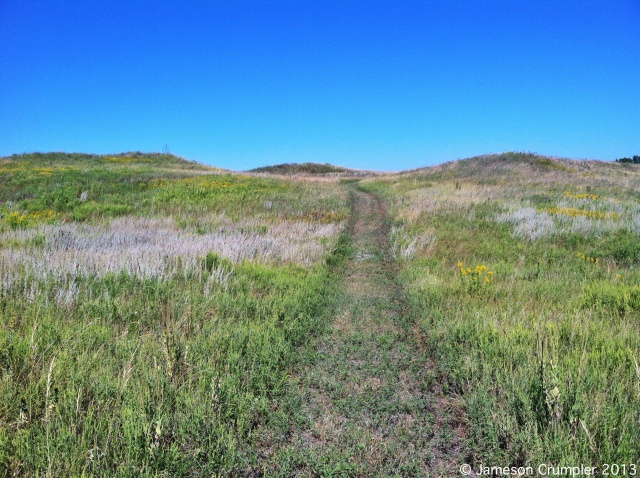Part 2 in a series of posts and photos showing my time here in Nebraska working as a Restoration and Stewardship Field Assistant for Prairie Plains Resource Institute.
Part 1 can be read here.
“Each grass-covered hillside is a page on which is written the history of the past, conditions of the present, and predictions of the future. Some see without understanding; but let us look closely and understandingly, and act wisely.” – J.E. Weaver

The Prairie Ragwort harvest continued in a disjunct sandhills near St. Paul, NE.

Also in these same sandhills, retro soda pop cans were found; this one was a pull tab and felt like it weighed 5 pounds. I had to laugh at the fine print: “Use of this product may be hazardous to your health. This product contains Saccharin which has been determined to cause cancer in laboratory animals.”

The Prairie Bucket Brigade enjoys a sprightly conversation during a great day of seed collecting at Pokorny Memorial Prairie. Later in the season, Pokorny got hit by a strong hailstorm – much of the seeds of the plants were stripped off, though some re-growth had occurred.

I was introduced to and became acquainted with the legume, Leadplant (Amorpha canescens). Fertig Prairie, NE.

I learned that “sedges have edges” and they will cut you. The use of heavy cloth athletic tape or duct tape is common among some veteran prairie seed collectors, though the photo above nor the aforementioned implies I am a veteran seed collector.

As the Junegrass (Koeleria macrantha) faded away for the year, I came to know the lovely little Missouri Goldenrod (Solidago missouriensis). This one was photographed in a prairie hay meadow, as a crop duster bombarded abutting corn fields with its violent noise and poisonous chemical streams. Welcome to the Corn Belt, “America’s Great Biological Desert!”

I finally met my favorite tallgrass prairie wildflower – Compassplant (Silphium laciniatum).
“What a thousand acres of Silphiums looked like as they tickled the bellies of the buffalo is a question never again to be answered, and perhaps not even asked.” – Aldo Leopold
Silphiums are easily one of my favorite plants. They are very large plants and are as cheery as the more common Sunflowers (Helianthus spp.). A post on this blog provides more information (geared toward homeowners) on the most common Silphiums of North America: Compassplant, Cup-plant, Rosinweed, and Prairie Dock.

One breezy, cool, late-summer day at Griffith Prairie, I took a moment to soak it all in, to ponder, to reflect, to absorb; knowing that my time here in the prairies of Nebraska is short, and that I might not get back this way for a good while.

I met Big Bluestem (Andropogon gerardii) – one of the classic tallgrass prairie grasses. The other three named classics are Indiangrass (Sorghastrum nutans), Switchgrass (Panicum virgatum), and Little Bluestem (Schizachyrium scoparium). Together, these grasses make up the “Big 4” of the tallgrass prairie.

A trip to the sandhills near St. Paul was taken again. At this point in the summer, the weather had cooled significantly. Temperatures were 15-20 degrees below normal for almost a full 3 weeks. Stiff Sunflower (Helianthus pauciflorus) is in this photo; note its red stems.

Plains Sunflower (Helianthus petiolaris) dominated this hilltop in this sandhills. For more discussion on why Sunflowers were so abundant in the Sandhills of Nebraska this year (and the same thought process can similarly be applied to other parts of the country experiencing a plethora of Sunflower colonies), scoot on over to Chris Helzer’s blog and read his post.

Upon my return from a quick weekend trip home, I ran head on into this thunderhead as it blew up from the floor of the Great Plains and moved in from the west. A good rain followed.

And not too long afterwards, the late vernal and early autumnal prairie arrived. Time for yet another goodbye to the growing season as my favorite time of year starts to roll in.
The last big push for seed collection has begun. Combine season – the bulk grass harvest – which we anticipate starting this week or next, will be our final seed collection event for this year. The first frosty temperatures of fall are not too far off (2-3 weeks), and as I write this, it is 58 degrees, cloudy, with a hint of drizzle. Fantastic weather!

